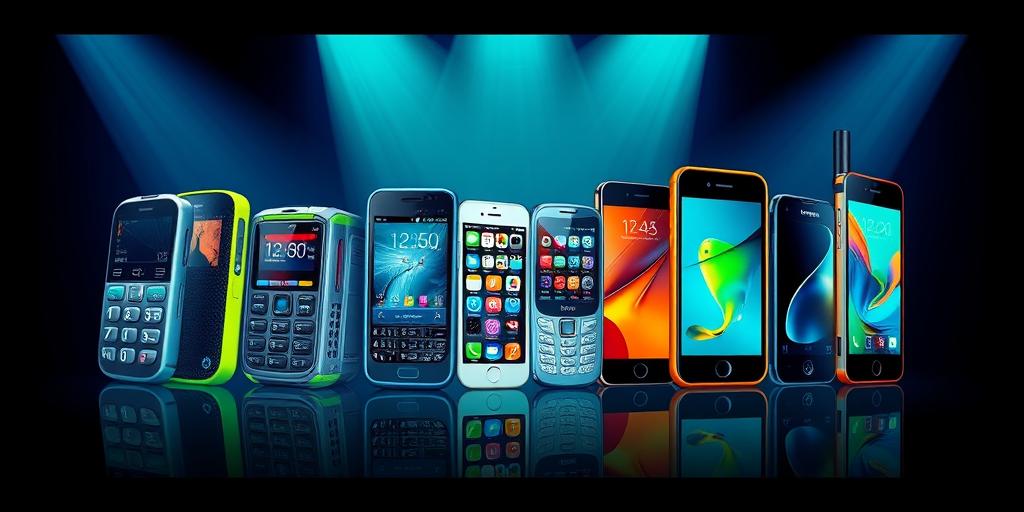Step back in time with us as we explore the incredible journey of early smartphones and their profound impact on today’s technological marvels. Prepare to be amazed by the ingenuity and innovation that laid the groundwork for the sleek devices we hold in our hands today. From their humble beginnings to the sophisticated technology we now take for granted, this exploration reveals the surprising lineage of your smartphone. We’ll uncover how these early pioneers overcame seemingly insurmountable challenges, paving the way for the seamless integration of mobile technology into every facet of modern life.
The Dawn of the Smartphone Era: Innovation’s First Steps
The term “smartphone” itself is a fascinating journey. Before sleek touchscreens and intuitive apps, the very idea of a smart, portable phone was revolutionary. Early attempts at combining computing power and mobile communication resulted in bulky devices with limited functionality. These early models weren’t just clunky – they often fell short in key areas. Battery life was abysmal, making calls a short-lived luxury. Processing power was a fraction of what we see today, causing frustrating delays. Storage limitations restricted functionality, especially with early attempts at incorporating apps. Despite these limitations, early smartphones set the stage for future advancements. The determination to combine computing and communication led to the breakthrough that is the modern smartphone.
Overcoming the Obstacles: Early Challenges and Triumphs
Early smartphone developers faced numerous hurdles. The limited processing power of early processors meant that simple tasks were slow and tedious. The bulky size was largely due to the physical limitations of technology. Miniaturization wasn’t as advanced as it is today, and early components were quite large. It was the relentless pursuit of innovation that pushed boundaries, and overcoming these obstacles led to remarkable advancements.
The Rise of Symbian and Palm OS: Forerunners of Modern Mobile OS
The 1990s and early 2000s witnessed the emergence of Symbian and Palm OS, pioneering mobile operating systems. These systems were revolutionary for their time, providing features that were unheard of before in mobile devices. Symbian, for example, offered a level of app customization that was groundbreaking. The Palm OS, known for its user-friendly interface, gained popularity. The development of these mobile operating systems is a testament to the continuous progress and refinement that characterized the early stages of smartphone technology. These platforms were the foundation upon which future operating systems would be built, introducing concepts such as app stores and sophisticated user interfaces. These improvements improved the user experience and drove the adoption of smartphones.
The Impact of Symbian and Palm OS on App Development
While the apps available were basic compared to today’s standards, Symbian and Palm OS pioneered the app ecosystem. These initial mobile apps paved the way for the sophisticated and expansive app stores we enjoy today. The early experiences of developers using these platforms shaped the design and development of future mobile apps. The lessons learned in terms of user experience, functionality, and optimization directly impacted the app development world.
The Smartphone Revolution: The iPhone and Android’s Impact
The arrival of the iPhone and Android marked a paradigm shift in mobile technology. These devices were not simply improvements; they redefined what a smartphone could be. The intuitive touchscreen interface and the vast app ecosystem dramatically improved the user experience. This change led to a massive increase in smartphone adoption. The ability to perform a wide range of tasks – from communication to gaming – from a single device proved revolutionary and profoundly changed how we interact with technology.
The App Ecosystem: A World of Possibilities
The iPhone and Android’s app ecosystems created a wealth of opportunities for developers and users alike. This shift from simple applications to complex, fully featured apps opened a new chapter in smartphone innovation. The app store model dramatically simplified app discovery and distribution. The introduction of thousands of apps created a world of possibilities for smartphones. The accessibility and ease of use of these apps broadened the smartphone’s appeal to a wider audience, cementing the device as a must-have gadget.
From Brick Phones to Pocket Supercomputers: A Legacy of Innovation
The journey from early, bulky smartphones to the sleek, powerful devices we have today is a remarkable testament to human ingenuity. The early challenges, the innovative solutions, and the transformative impact on our daily lives underscore the importance of continuous improvement and technological evolution. Early smartphones weren’t just phones; they were the seeds of a technological revolution that continues to shape our world. Every time you use your smartphone, remember the incredible legacy of those early innovators who laid the groundwork for today’s interconnected world. We stand on the shoulders of giants, and their contributions are undeniable.
Embrace the incredible advancements in technology. Explore the rich history of smartphones and be amazed by the evolution from the first clumsy models to the sophisticated devices we carry today. Share your thoughts on the impact of early smartphones on modern technology in the comments section below. Let’s discuss this exciting journey together!




